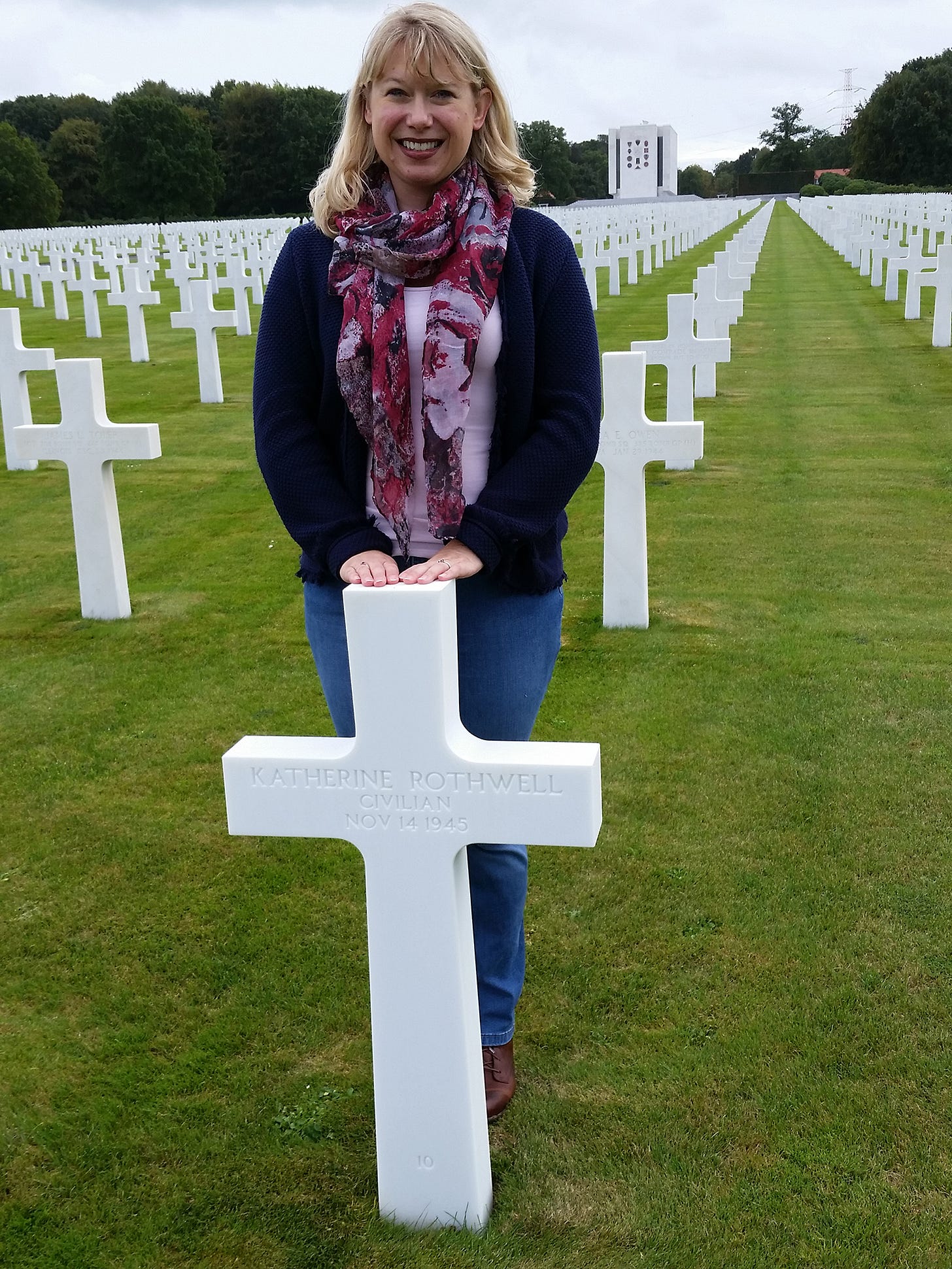Civilian Individual Deceased Personnel Files (IDPFs)
Explore the stories of an infant in Belgium and a man in France.
As we approach Memorial Day, did you know there are also civilians with IDPFs buried in our American Battle Monument Commission (ABMC) Cemeteries? While the cemeteries are primarily military personnel, there are a few civilians interred there. These civilians were often family members of service men and women serving overseas. Many are adults, but there are also a few babies and children. Some women in military service overseas gave birth to stillborn babies or lost their babies soon after birth. They were temporarily buried in military cemeteries. Most were repatriated. Baby Katherine Rothwell is buried in Ardennes. Her IDPF is heartbreaking. Several people in Europe have researched her story and that of her father.
When civilians were buried in the temporary cemeteries during the war, an Individual Deceased Personnel File (IDPF) was created for them. IDPFs are commonly seen for military personnel, but most people do not think about them for civilians. Even if a civilian was later repatriated for burial in the U.S., there will still be an IDPF he was buried in a U.S. temporary cemetery.
How do you know if someone is a civilian? See the image for Alfred Chaskin. I researched him and visited his grave at Normandy American Cemetery. His entry on the ABMC database does not show a serial/service number or unit. Only his home state (listed as Enlisted Service From) and date of death.
Alfred Chaskin
Buried: Normandy American Cemetery, Plot A Row 6 Grave 18
Died: 3 January 1944
Chaskin was an American with a Swiss ID card, living in France since 1912. He was interred during the war and died in a POW camp in Austria. Records in his file show a cranial autopsy was performed after his death due to lung cancer and brain cancer. An extensive tooth and bone chart exists in his file. The file also contains his hospital notes and autopsy findings.
Alfred’s IDPF is 114 pages long. You can read his IDPF and learn his story. You’ll see similar documents as what you find in a soldier’s IDPF. There are many handwritten letters from his daughter, who was living in Paris.
All IDPFs are somewhat heartbreaking, especially if they contain family letters, or the rare photograph. The baby or child civilian files can be especially difficult to read. What do you think about these stories?






